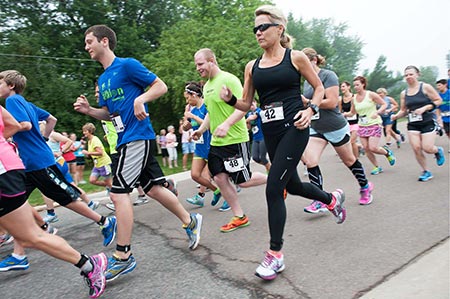 Warmer weather has arrived, which means runners are gearing up for the first 5K races of the season.
Warmer weather has arrived, which means runners are gearing up for the first 5K races of the season.
Whether you’re new to running or you’re getting back into it after a hiatus, consider these tips for successful, injury-free running from warm-up to the finish line.
Warm up is key
Warm up to loosen muscles and joints before running.
Walking forward and backward, side-stepping and doing crossover steps prevent injury by stretching the Achilles tendons, knees, hips and glutes, said Dr. James Mullen, a physical medicine and rehabilitation specialist at Marshfield Clinic Woodruff Center.
A five-minute warm-up should suffice when weather is warm; aim for 10 minutes when weather is cooler.
A few days of soreness is normal after starting a running program, but pain that doesn’t quiet down with rest means it’s time to see a doctor.
Start slowly with skipping
Skipping isn’t only for kids on the playground; it can serve as a bridge between walking and running by preparing joints for the increased impact of running.
Start with a minute of walking, a minute of easy skipping and a minute of jogging. Repeat the sequence five times for a total of 15 minutes.
Work your way up to skipping for one minute and jogging for two minutes, for a total of 20-25 minutes.
After you’ve mastered that, try running immediately after your warm-up.
Strengthen your core
Stand with your palms against a wall like you’re doing a push-up or plank. Push off the wall, and then catch yourself with your hands as you fall back toward the wall. As you get stronger, do 10-15 wall pushes balanced on one foot, then switch legs.
Core muscles engage as soon as your hands hit the wall so you don’t collapse, Mullen said. A strong core helps absorb some of the impact of running. This exercise strengthens shoulders and improves posture at the same time.
Hydrate
Plain water is perfect if you’re running less than 60 minutes.
Monitoring your bathroom habits can help you determine how much water to drink. Urine should be a pale yellow. If it’s dark yellow, you’re not drinking enough water.
Pace yourself on race day
Start out at a comfortable pace. Starting out too quickly can result in a slower race than if you start slowly and build your way into the run.
“You can always speed up if you’re feeling good in the second half of the race,” Mullen said.

